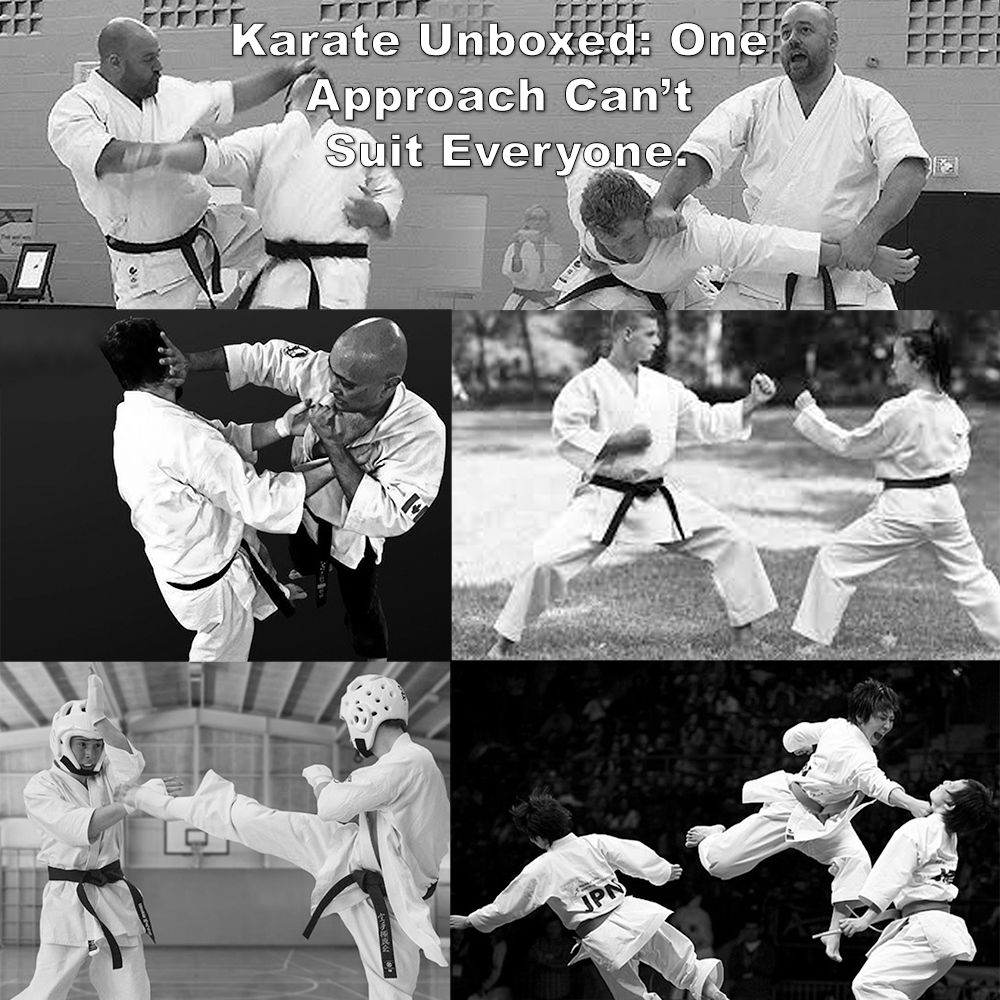
(Approx 2 minute read)
Should we differentiate the various forms of karate or even consider renaming them? For instance, Sport-karate, Children’s-karate, Practical-karate, or 3K karate?
.
The failure to differentiate between contexts is widespread, and for me, it’s essential, especially when discussing what it is that you practice or teach. Criticizing sport-karate for not working in self-defense is like claiming a boat is useless because it doesn’t work on a highway. Each serves a purpose based on its design.
.
What works is always context-dependent.
.
Karate, as it’s practiced today, cannot fit all needs equally. There is often misunderstanding when trying to discuss what works for one person versus another. The reality is that there is no one-size-fits-all approach to learning or training.
.
If your current method feels right for you, keep practicing! But it’s crucial to recognize that every method has its limits. To truly deepen your understanding and improve, it’s valuable to be aware of these limitations and to choose the right approach for the goals you are trying to achieve.
.
While the physical movements of karate may appear similar at first glance, the context and purpose behind them reveal the true nature of the karate being practiced.
.
Understanding these distinctions allows you to move beyond seeing only techniques and start to appreciate the specific goals and applications of the karate you practice.
.
Recognizing the unique qualities of each method helps you approach training with greater insight and purpose. Whether your focus is on competition, self-defense, personal growth, or fun and fitness, knowing where your practice fits within the spectrum of karate can help you tailor your training methods more effectively.
.
Acknowledging that one approach does not suit everyone, you can create a more informed and adaptable martial art. This approach promotes a deeper respect for different training philosophies and encourages practitioners to continuously seek the best methods for them.
.
Providing the way people are training is truly addressing their goals, then all is good. No one approach is inherently superior to all others because there is no common standard by which all the various aspects can be judged.
.
Instructors who advertise self-defense while focusing solely on 3K, tournament practice, or karate-ka vs. karate-ka techniques often fail to address real-world confrontations. This approach doesn’t prepare students for the realities of self-defense.
.
There is no reason to limit yourself to one aspect of karate alone. I’d also not want to suggest others should either. However, we all just need to clearly identify our goals and the needs of those goals – are you really teaching self-defense or just skimming the surface of it?
.
Karate’s beauty lies in its intention and context. Choose your path wisely, train with purpose, and remember – clarity in your goals makes all the difference. Be honest about what you teach and don’t hide behind the label of ‘Karate for all’.
.
.
Written by Adam Carter – Shuri Dojo
